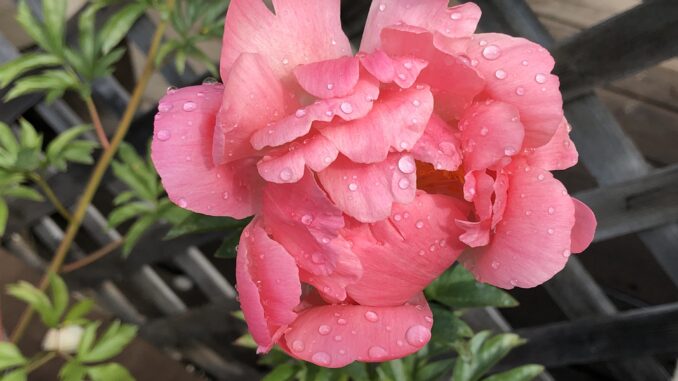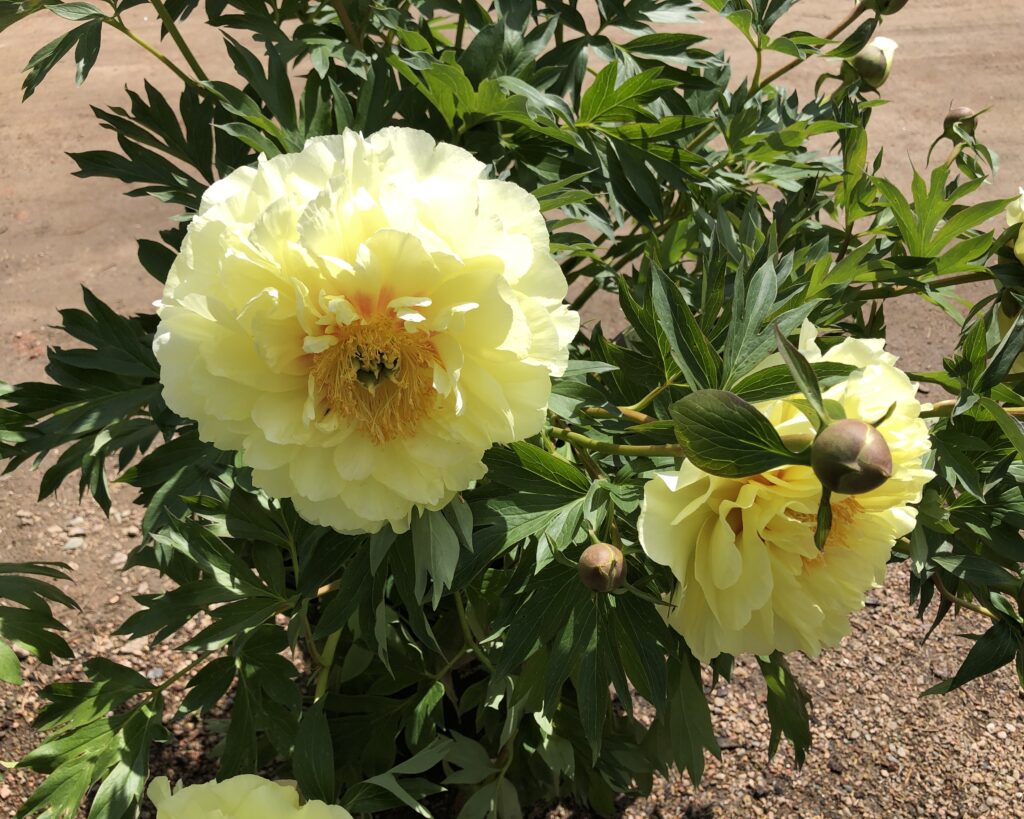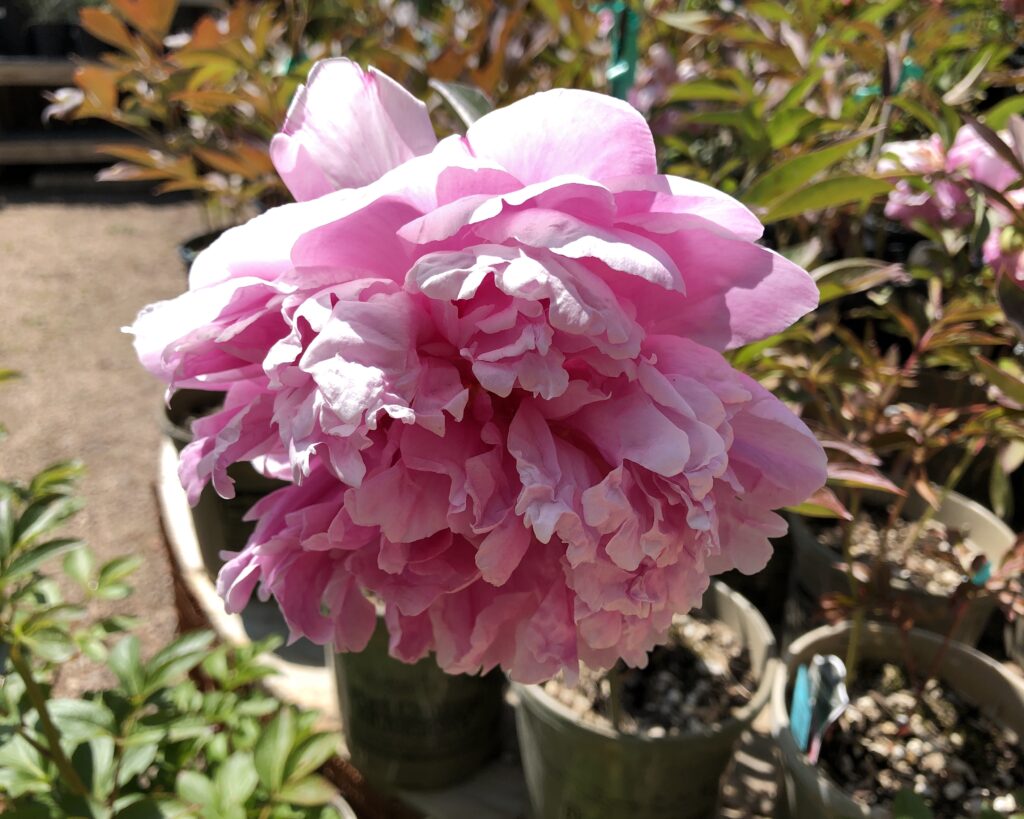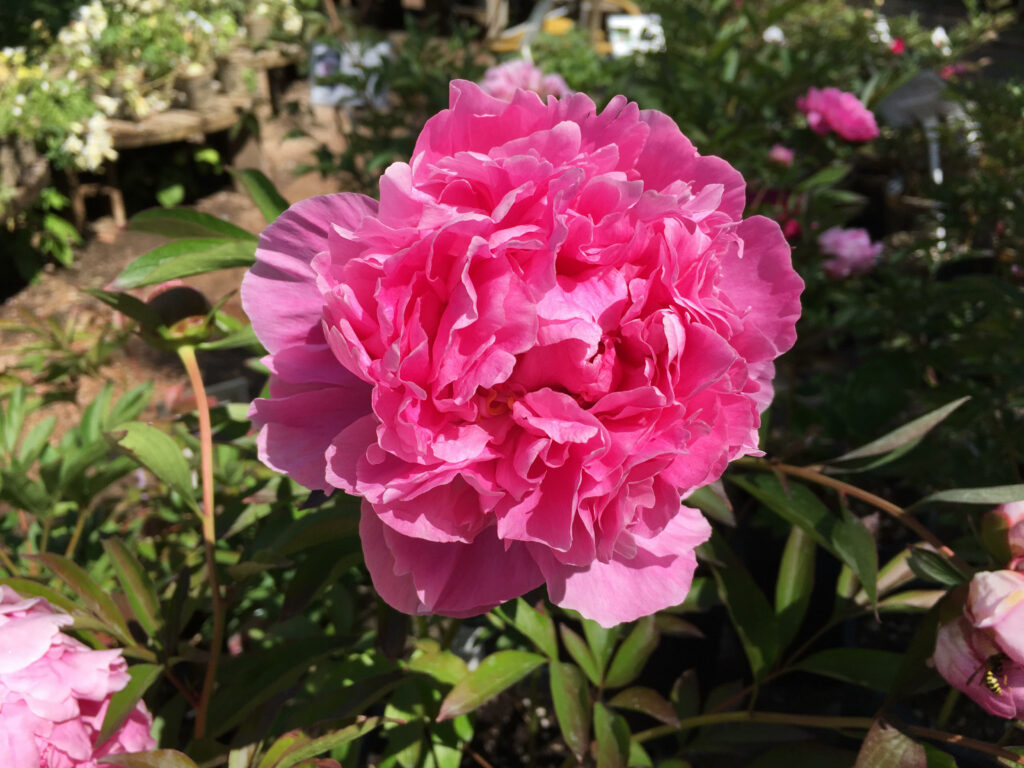

by Alex Tisthammer | Fort Collins Nursery
Peonies are a timeless classic, a common subject in artwork all over the world, and prized for their breathtaking flowers. With their classical delicate-looking blooms, they don’t seem like they could be grown in a dry high steppe environment like Colorado. Luckily for us, this isn’t true! Peonies are hardy, long-lived, and tough. They can live up to 100 years if properly cared for in optimal growing conditions and are sometimes handed down from generation to generation.
There are three kinds of peonies: herbaceous, tree, and itoh. Herbaceous peonies die back to the ground completely when they go dormant and come in shades of pink, red, and white. Their dense full blooms are often too heavy for their stems, so stakes or peony rings are used to provide support and keep the flowers aloft.

Tree peonies are woody shrubs with huge flowers in a wide range of colors. They have stout woody stems that don’t require cutting back. Once they start budding out in the spring you only need to remove the dead stems. They are slower growing than the other types, so have patience when it comes to growing them. They can take three years to get settled and start blooming.
Itohs are hybrids between herbaceous and tree peonies. They have thick, sturdy stems that easily support huge blossoms in colors like yellow, mauve, lilac, and orange. Many of these hybrids will form buds on the previous year’s wood, so do not remove dead or last year’s stems until you see where buds form.

After choosing which type is best suited for your landscape, it is time to select a location. Peonies grow best in areas with plenty of morning sun and afternoon shade to protect the blossoms, but they can be grown in full sun as well. Peonies do well in our alkaline soils, but not lean or poorly draining soils, so make sure to amend the soil when planting. They prefer regular watering, but if they receive less water in the late summer months or are in a particularly hot location, they can go dormant early. This is normal, so don’t be alarmed. The plant will begin to yellow and brown as the root system absorbs all the nutrients from the leaves to keep the tuberous roots happy until next year. Once the leaves are completely brown and crisp, you can cut the foliage off.

Peonies are one of the first plants you get to see peeking up in the spring, with their bright burgundy shoots pushing through the soil along with the daffodils, crocus, and snowdrops. When you see them coming up make sure to clear the debris or mulch away so they can start to soak up the sun. It’s amazing how they can start out so small and in weeks they are huge bushes covered in blossoms. Plant some peonies in your yard this spring to brighten up your yard as well as your house, they make wonderful fragrant cut flowers!
Support Northern Colorado Journalism
Show your support for North Forty News by helping us produce more content. It's a kind and simple gesture that will help us continue to bring more content to you.
BONUS - Donors get a link in their receipt to sign up for our once-per-week instant text messaging alert. Get your e-copy of North Forty News the moment it is released!
Click to Donate